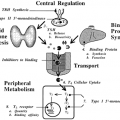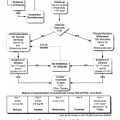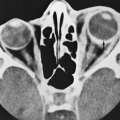DISEASE-SPECIFIC VARIATION
A wide variety of severe illnesses, including poorly controlled diabetes mellitus, infection, malignancy, acute myocardial infarction, stroke, major surgery or injury, and malnutrition, may lead to characteristic patterns of altered thyroid hormone indices. This section reviews selected nonthyroidal disorders, with an emphasis on caloric deprivation as both a model and a common component of diverse forms of NTI. In addition, disorders in which the usual pattern of NTI has been modified because of the superimposition of effects unique to the underlying disease state are discussed.
CALORIC DEPRIVATION
The effect of prolonged fasting on the parameters of thyroid function is a well-studied model for NTI. With this model, the myriad of interfering influences that are present in many hospitalized ill patients are avoided. During acute caloric deprivation, serum total and free T3 levels begin to descend within the first 24 hours and reach a plateau within 1 to 2 weeks. The concentration of serum rT3 rises, and it plateaus at nearly double basal levels during this period.29 Serum T4 levels generally remain stable during fasting, and FT4 levels are either normal or slightly increased. Serum TSH levels decrease slightly during the initial fasting period and return to baseline within 96 hours.19 The pituitary response to TRH is blunted during a fast relative to the fed state, but generally remains in a range that is appropriate to the true thyroid state.24,30 Interestingly, the effect of fasting on thyroid indices is ameliorated when as little as 50 g of glucose or protein is given, but not when fat is the sole source of the caloric supplement.1,30 The concept that these changes are homeostatic in nature has been strengthened by the observation that the administration of T3 in this setting increases gluconeogenesis at the expense of muscle protein catabolism and thereby promotes depletion of lean body mass.31
RENAL FAILURE
Patients with end-stage renal disease have a higher incidence of both goiter and primary hypothyroidism than do hospitalized control patients.32 Like patients with other serious NTIs, patients with chronic renal failure have depressions in serum T3 and T4 levels, normal FT4 levels, normal TSH levels, and elevated free rT3 levels.32,32a However, in contrast to other disorders, serum total rT3 levels generally are normal rather than elevated in renal failure. Multiple differences in rT3 handling account for this observation, including a normal rather than a decreased rT3 metabolic clearance rate, a decreased protein binding of rT3, an enhanced exit rate of rT3 from the serum into tissue, and enhanced tissue rT3 binding.32 Patients with the nephrotic syndrome have enhanced urinary T4 and T3 losses; much of this is accounted for by the concurrent loss of thyroid-binding globulin (TBG) in the urine. Despite this finding, these patients usually have changes in their thyroid indices similar to those of patients with chronic renal failure. Shortly after the initiation of dialysis, patients with renal failure may experience improvement in serum T4 and T3 levels; this may be only temporary, because patients undergoing long-term dialysis generally have persistent decrements in these levels.1,32
Stay updated, free articles. Join our Telegram channel

Full access? Get Clinical Tree







